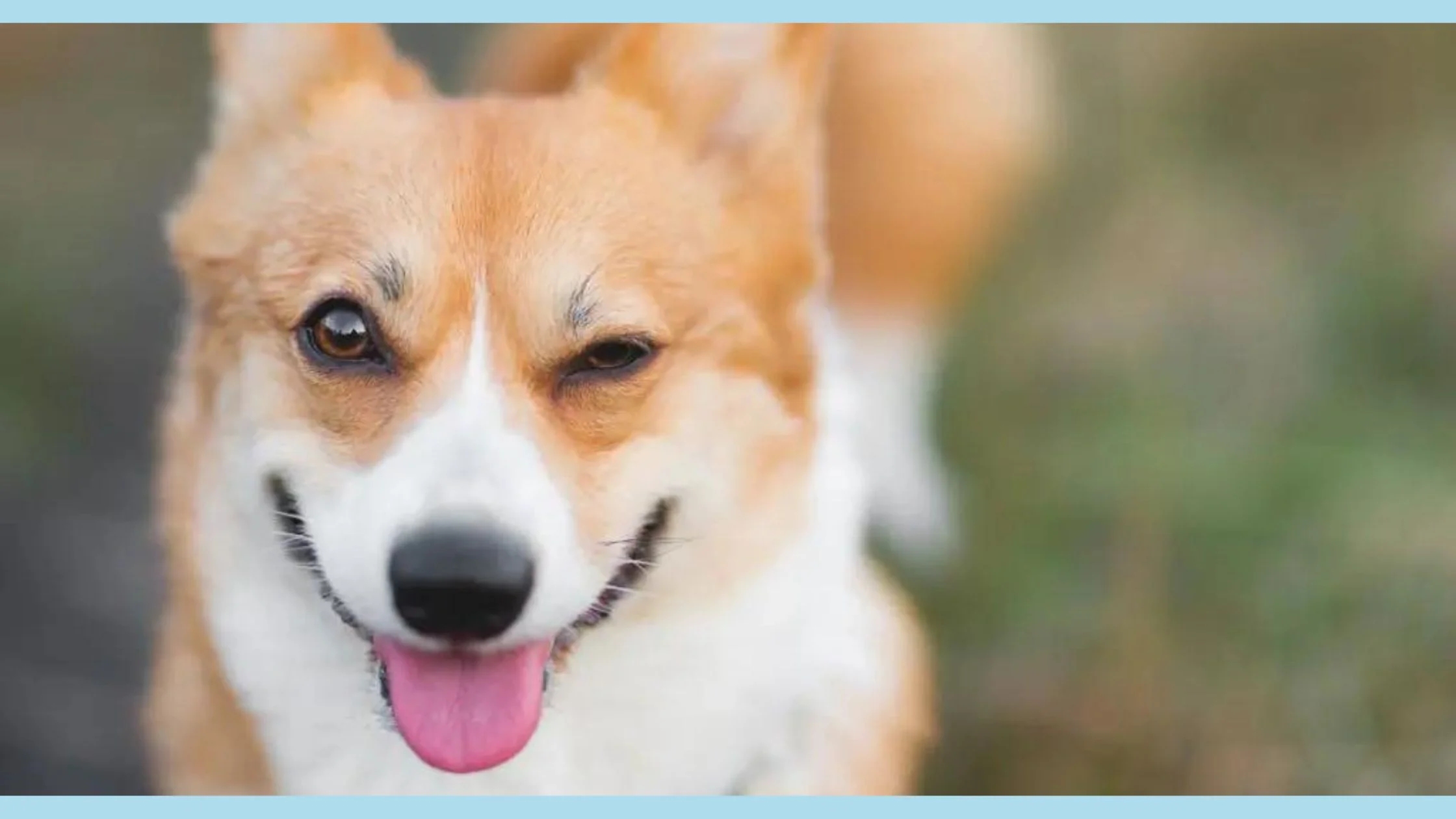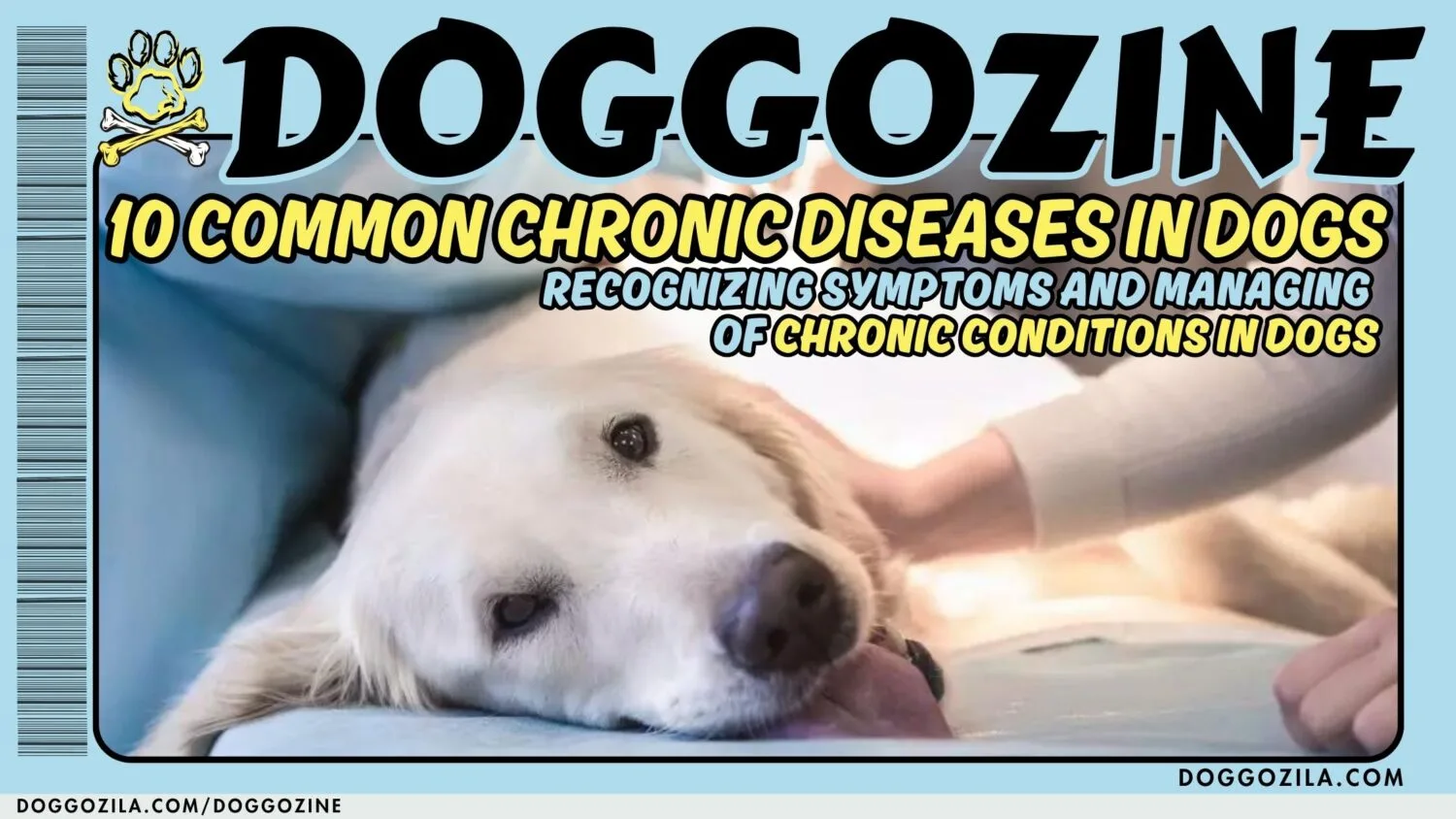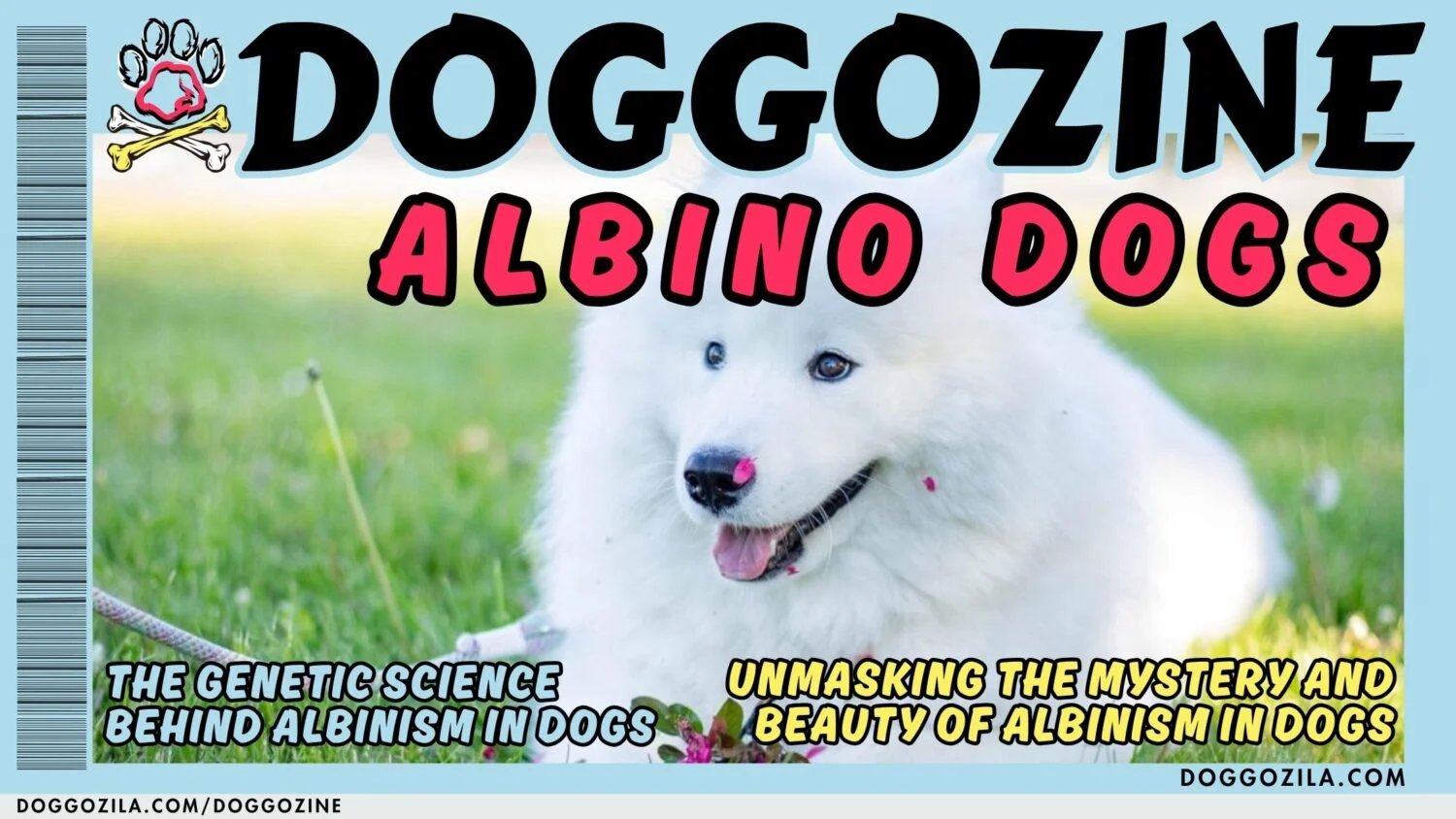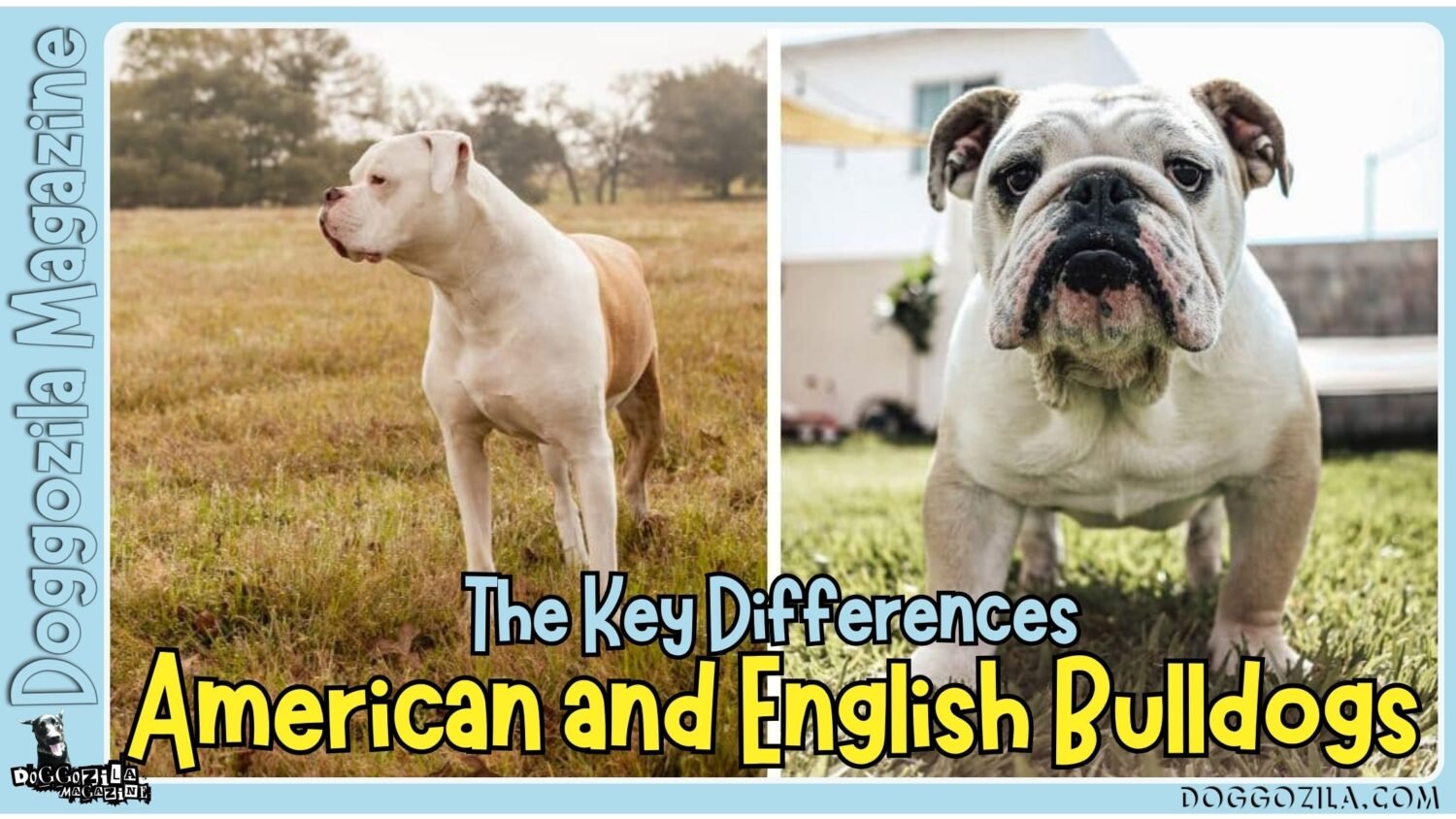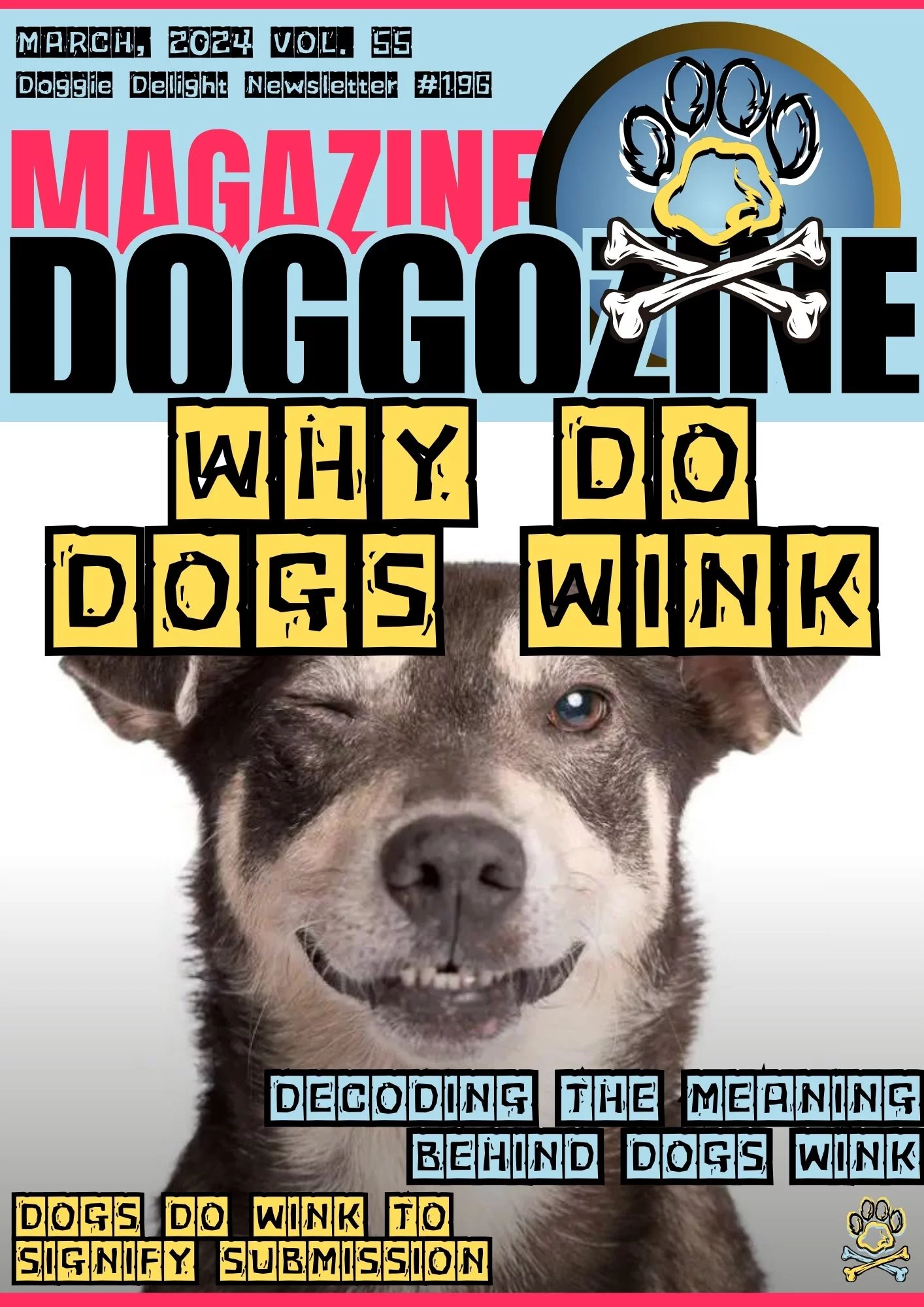
DOGS WINK AND BLINK TO COMMUNICATE AND PROTECT EYES
Dogs wink to show they are friendly and mean no harm. This behavior helps them communicate in a peaceful way. When a dog winks, it means they feel relaxed and do not want any trouble. Winking is a natural way for dogs to let others know they come in peace.
Dogs Blink and Wink to Keep Eyes Healthy
Blinking and winking help keep dogs’ eyes lubricated and clean. Just like humans, dogs produce tears that keep their eyes moist and free from drying out. When dogs wink, the tears spread evenly over their eyes, keeping them healthy and comfortable. Blinking also allows dogs to remove any dirt, dust or other particles that may get into their eyes. Dogs are curious and may get particles in their eyes while exploring. By blinking, they can clear away these irritants and prevent eye discomfort or damage.
Blinking is also a sign that a dog feels calm and content. Dogs tend to blink more when they are relaxed and at ease. You might notice your dog blinking while resting, getting belly rubs, or lounging around. This blinking shows the dog feels safe and peaceful in that moment. Interestingly, dogs use blinking to communicate with their human families too.
Dogs Use Winking to Communicate With Us
When a dog stares into its owner’s eyes and slowly winks and blinks, it often shows trust and affection. This behavior, called “doggy kisses,” helps dogs bond with their humans. It’s a subtle but meaningful gesture that strengthens the connection between a dog and its owner.
In summary, winking is natural for dogs and serves several purposes. It keeps their eyes moist and clear of debris. It signals relaxation and non-aggression. And it can communicate with human companions. So the next time your furry friend winks, remember it’s not random – it conveys emotions and intentions.
Winking and blinking also have an important physical role for dogs. Like humans, dogs need to keep their eyes moist and free from irritants. Blinking spreads tears over the eyes, preventing dryness or discomfort.
Dog Winks and Blinks Show If They Are
Calm Or Distressed
Winking and blinking help dogs maintain good vision too. When a dog blinks, it briefly interrupts visual input, allowing the eyes to rest. This short pause prevents eye strain and fatigue, ensuring dogs can see clearly.
Dogs wink and blink to show how they feel. It helps them talk without words. Blinking a lot means a dog feels scared or worried. Slow winks mean the dog feels calm and happy. Watching how a dog blinks tells us if they are okay or not.
Dog owners should pay attention to how their pet blinks. Changes in blinking patterns can mean the dog is stressed or sick. If a dog starts blinking too much or too little, something might be wrong. Checking for blinking issues helps owners take better care of their dogs.
In short, winking and blinking are important for dogs. It’s how they share their feelings and health. Understanding blink signals helps owners keep their dogs comfortable and content.

DOGS DO WINK AND BLINK TO EXPRESS THEIR EMOTIONS AND ESTABLISH A CONNECTION
Winking isn’t just about negotiating for dogs. It’s part of how they communicate overall. Dogs use body movements, sounds, and facial expressions to share feelings. Winking and blinking help dogs express emotions. It’s a subtle way for dogs to connect with others.
Dog Winking Can Tell Owners Many Things
When a dog blinks or winks, it’s not just a random thing. It’s a way for the dog to communicate feelings. Dogs use blinking to show relaxation, trust, and submission. For example, a slow soft wink means the dog feels calm and cozy. You might see this when the dog is lying down, getting belly rubs, or sunbathing.
But if a dog blinks really fast or avoids eye contact, that can mean anxiety, fear, or feeling uncomfortable. Dogs do this when they feel threatened or overwhelmed by a situation. By blinking, the dog is trying to say “I feel vulnerable” and wants reassurance from humans or other dogs.
Winking Helps Dogs Bond
As well as showing feelings, blinking helps dogs bond with owners. When a dog looks at its owner and winks or blinks, it shows trust and affection. This is called “soft eyes.” Often, owners will do the same wink back, creating a positive loop of understanding and love between them.
For dog owners, it’s important to understand what winks and blinking mean. By noticing blinking patterns, owners can better understand the dog’s feelings and respond properly. It also lets owners communicate with their dogs using blinks to build trust, ease tension, and strengthen their bond.
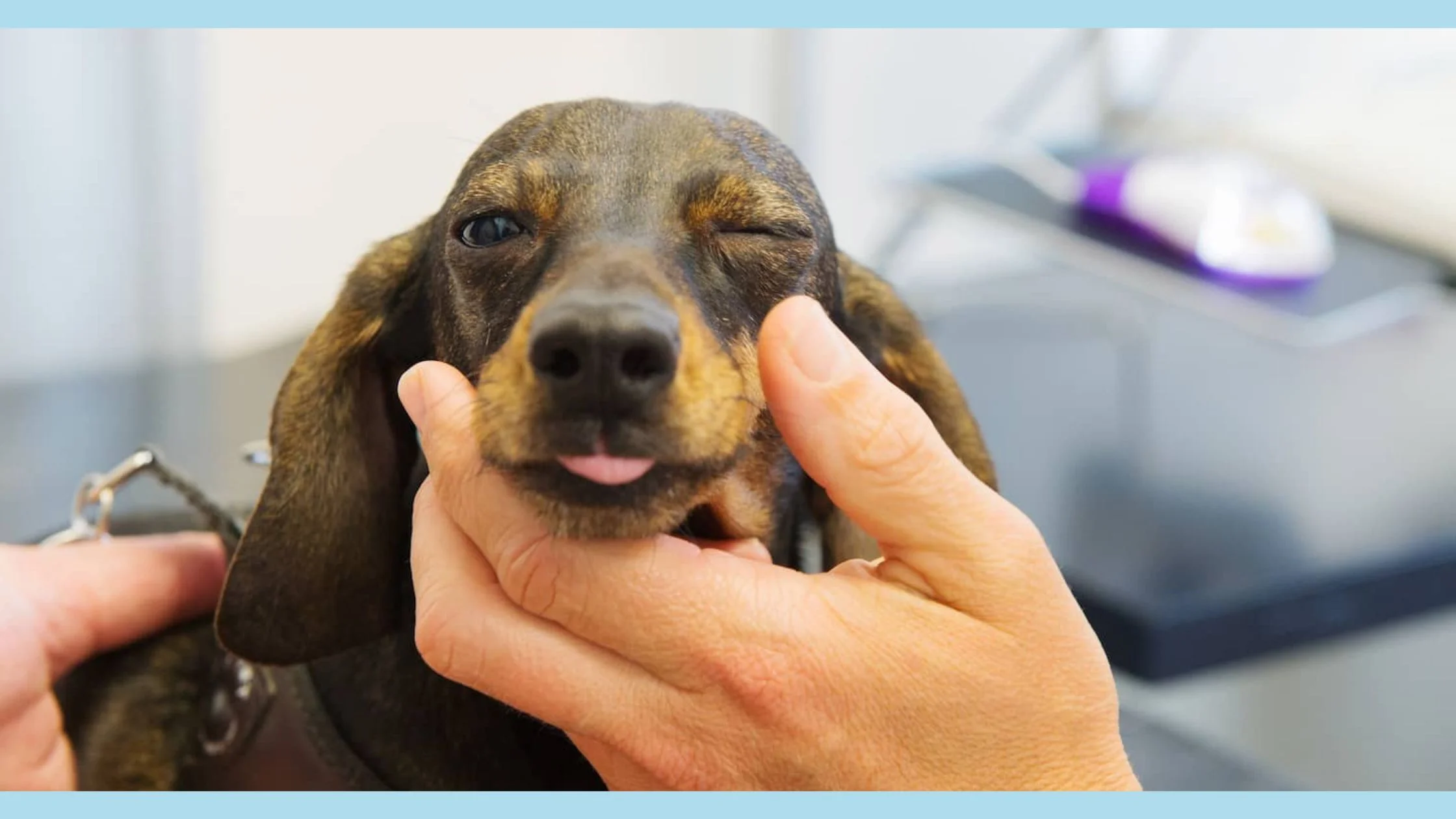
HOW TO OBSERVE DOG BLINKING PATTERNS
Blinking isn’t just a reflex or random action in dogs. It serves a vital role in how they express emotions and interact socially. By understanding the importance of their blinking, we can strengthen our bond with our furry friends.
Learn Your Dog’s Body Language
When trying to understand a dog’s feelings and intentions, pay close attention to their blinking. It may seem simple, but blinking reveals a lot about their emotional state. Dogs often blink when displaying friendly body language. This includes a relaxed posture, loose tail wag, and soft facial expression.
If a dog blinks while also avoiding eye contact, staring intently, or seeming tense, it may not be feeling as friendly or comfortable. Always consider the context and overall body language to fully grasp their intentions. A dog that blinks while seeming at ease is likely feeling calm and content in their surroundings.
Learning to read your dog’s body language, including their blinking patterns, is key to effective communication. Picking up on their signals through blinking and other cues allows you to better understand their emotions. This understanding strengthens the bond and trust between you both.
Other Dog’s Body Language Cues
Dogs don’t only blink to show emotions. They also use tail wags, ear positions, facial looks, and body posture. By seeing these signals, you can better understand your dog. A wagging tail often means happiness and excitement. A tucked tail can mean fear or worry. Erect ears show your dog is paying attention. Flattened ears may mean submission or fear. Looking at blinking and other body signals together helps you see how your dog feels. Each dog is unique and may use body language differently.
Some dogs blink more or less than others, or in different situations. So, get to know your dog’s own body language patterns and behaviors. Observe your dog’s blinking and other signals. This helps you communicate better and feel closer. A stronger bond leads to a happier relationship with your canine friend.
Interpreting A Dog’s Blinking
When reading a dog’s blinking, also look at the whole situation and other body language. Blinking alone may not fully show the dog’s feelings or intentions. For example, if the dog blinks but also has a relaxed posture, wagging tail, and open mouth, it likely feels comfortable and ready to interact. In that case, the blinking is a good sign of relaxation and friendliness.
Dogs are smart animals that use body language to talk. Blinking is one way they show feelings. When relaxed and happy, dogs often blink slowly. But if scared or worried, quick blinking can mean the dog wants space. Some pups naturally blink more than others. It’s part of their personality, like how people act differently too. To understand dogs better, we need to look at their whole body. Are their ears back? Tail tucked? This gives more clues about what the blinks mean. Blinks alone don’t tell the full story. We have to watch everything – tail, ears, posture – to know if a dog feels calm or uneasy.
Dogs communicate through movements, not words. Paying attention to a dog’s body language is key. Watching blinks along with other signals helps us “hear” what they want to say. Do they look tense or loose? That gives hints about their feelings when they blink. Being aware of all the signs shows respect for our furry pals. It’s how we can chat with dogs in a kind, caring way.

DECODING THE MEANING BEHIND DOGS WINK
When dogs wink, it could mean different things depending on how they act. Maybe the wink shows they understand something you did or said. Like humans winking to share an inside joke! For pups, winking might signal they feel relaxed and content with their surroundings. Dogs notice little details. Winking could be their way to let you know, “I got it, we’re on the same page.”
Dogs Wink Out Of Love
Dogs may wink to show affection. Like people, dogs have ways to express love for their owners. A wink could be how dogs show fondness and adoration, like when people wink at someone they care for. It’s a playful gesture that strengthens the bond between a dog and its owner.
Also, a dog’s wink might show a sense of humor. Dogs are playful and can make us laugh. A wink may be their way to make us smile or play a game. It’s a fun gesture that shows their joyful personality.
But not all dog winks are positive. Sometimes, a dog may wink to show submission or avoidance. Dogs do this when anxious or unsure. By winking, they try to show they mean no harm and don’t want trouble. You must look at the dog’s overall body language to understand why it winked.
In short, a dog’s wink can mean different things depending on the situation and behavior. It can communicate, show affection, display humor, or indicate submission. Understanding a dog’s wink can deepen our bond and help us know its emotions and intentions.
Other Dog Signals From Affection
Dogs have many ways to show their love and bond with you. They are loyal and devoted companions. Dogs seek physical touch to express affection. They may lean against you, rest their head on your lap, or gently nudge you with their nose. These gestures show they want to be close to you. Dogs enjoy being petted and will nudge your hand or roll over for belly rubs. This means they want your attention and affection.
Dogs also use body language to communicate love and affection. Their tails wag excitedly when they see you. They jump up to greet you. They may even lick your face as a sign of affection. These behaviors show joy and happiness in your presence. Dogs show love through their eyes too. Soft, relaxed eyes mean they trust and feel safe with you. Eye contact and holding your gaze connects you deeply.
Dogs often show love by being protective of their owners. They may bark or growl at strangers or animals to defend and keep you safe. This protective instinct shows their deep bond with you and desire to keep you from harm.

Dogs Show Love in Special Ways
Every dog is different. Some dogs are loud and playful. Others are quiet and like to cuddle. Understanding your dog’s special way of showing love will help you bond better.
Dogs wink to show they love you. They also touch you, use body language, and protect you. Dogs have many ways to show their love and loyalty. Enjoy these moments and give your dog care and love too.
Feeling peaceful is good for animals and humans. Dogs know when they feel relaxed and content. A dog winking can mean they feel calm and happy inside. Just like people, dogs have quiet times when they feel at peace. A wink can be their way of showing this feeling.
Picture this: You sit outside, feeling the warm sun. Your dog lies beside you, relaxed. They look up and wink gently at you. This simple wink shows they feel happy and safe in that moment.
A Wink Means Trust
When a dog winks, it means they feel calm and present. It shows they feel safe and comfortable where they are. This peaceful feeling can come from a nice home, a loving owner, or no things to stress them. The wink means they are at peace.
Dogs sometimes wink at their humans. A wink can show a dog trusts their owner. Dogs form strong bonds with the people who care for them. By winking, a dog shows confidence in their human companion. The wink means the dog feels safe and secure with their owner.
But not all winks mean the same thing. Dogs are individuals with unique personalities. They communicate differently. To fully understand a dog’s wink, pay attention to their body language and situation. The context matters when interpreting a dog’s wink.
When your dog winks at you, it’s a reassuring sign. It shows your dog feels content and relaxed in your presence. The wink confirms the special bond you share. It demonstrates the positive impact you have on your dog’s life. Treasure these peaceful moments. Continue building the connection with your furry friend.

DOGS DO WINK TO SEEK ATTENTION
Dogs are social animals that enjoy human interaction. Winking can be a way for a dog to get your attention. By winking, your dog wants you to focus on them. It’s their way of saying, “Look at me! Pay attention!” If your dog winks at you, it’s a good time to show them some extra affection.
Not All Dogs Wink As A Means Of Seeking Attention
When interpreting a dog’s wink, consider the situation. Dogs wink for various reasons. Observe their body language and overall behavior. For example, if a dog winks while wagging its tail in a relaxed posture, it’s likely a friendly gesture seeking attention or affection.
Sometimes dogs wink for fun. They do it to get your attention or to play. But winking can also mean they feel stress. Look for signs like growling, baring teeth, or stiffening body. If so, be careful and ask an expert for help. Not all dogs wink for attention though.
Some dogs learn to wink by watching others or getting rewards when they do it. If you give them treats or pets when they wink, they learn it’s a way to get what they want. So it’s good to set clear rules and only reward behaviors you want.
Acknowledge Your Dogs Wink
Dogs wink to say they want to play. Like people use body language, dogs use actions like winks to show what they’re feeling. Winking may mean your dog wants to interact or have fun with you. Good owners understand their dog’s needs and give them love and care.
When your dog winks, notice and respond in a kind way. Pat their head, rub their belly, or play fetch. Showing your dog you see their wink and want to connect strengthens your bond. They’ll feel loved and valued by you.
Remember that every dog has a unique personality. Their behavior can differ. If you’re worried about your dog’s actions, talk to a vet or dog trainer. They can help you understand and respond well to your furry friend. This ensures a happy relationship with your beloved pet.
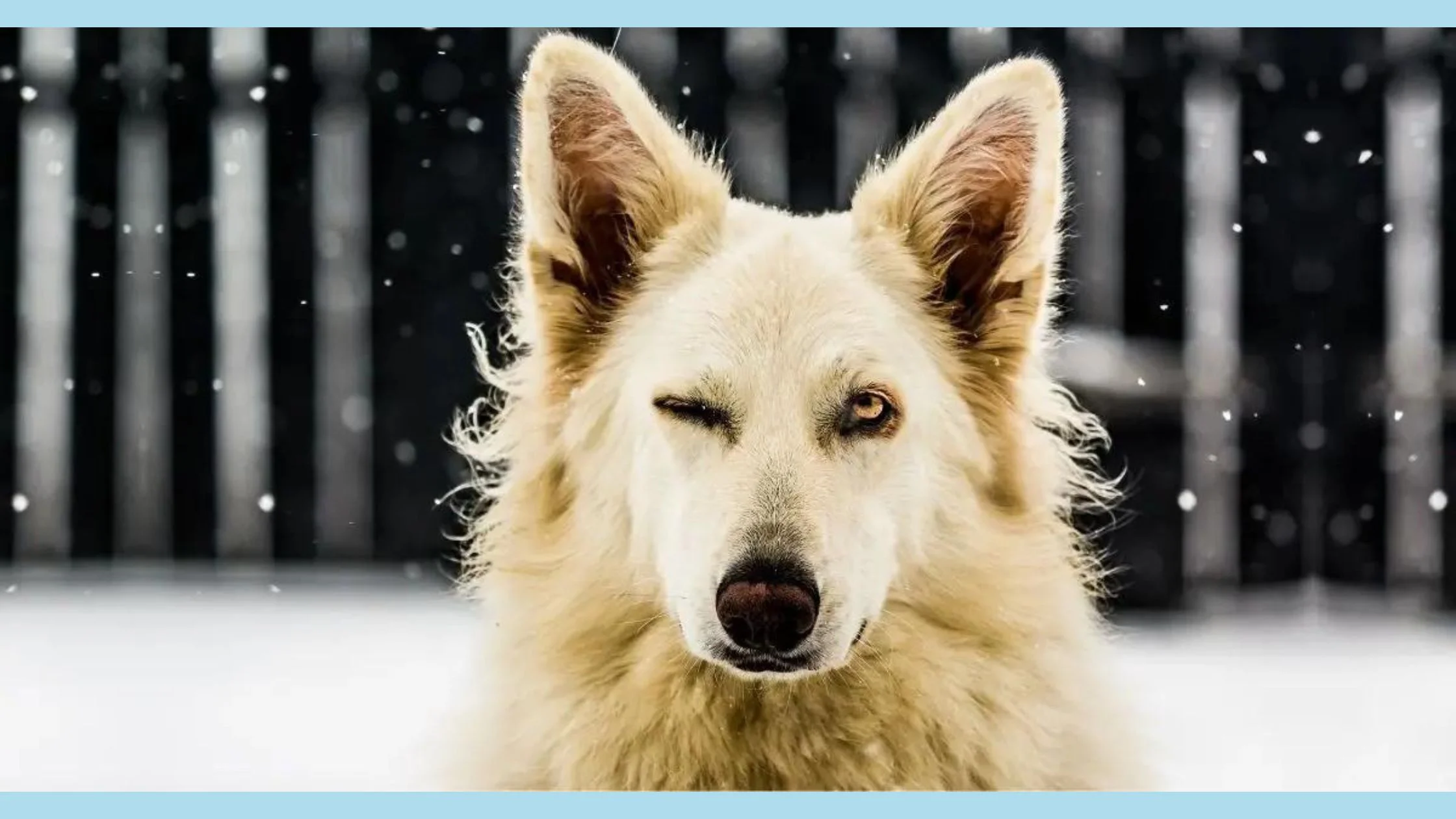
DOGS WINK TO COPY THEIR OWNERS
Dr. Conrad suggests dogs may wink to mimic you. If you wink often, your dog may copy this behavior. They do this to bond with you and act like you. Dogs are very observant. They often imitate owners’ actions to feel closer.
Dogs Use Mimicry To Communicate
Dogs don’t just wink to mimic. They copy various owner actions like yawning, stretching, or smiling. It’s how they show understanding and empathy towards humans. Studies show dogs are skilled at observing and learning human behavior. They pick up on gestures. Copying is an attempt to bond and communicate.
Dogs often copy what their owners do. This shows how much they care for and want to be like their owners. Dogs do this to communicate and show their love. They mimic actions to say they want the same things.
Dogs Copy Owners As A Sign Of Love
For instance, if an owner yawns, a dog may yawn too. This could mean the dog sees the owner is tired and feels sleepy themselves. Or if an owner stretches, the dog may stretch. Then the dog likely thinks it’s playtime.
Mimicking isn’t just for actions. Dogs also copy emotions. They may seem happy when owners are joyful. Or sad if owners seem down or worried. In those moments, dogs try to make owners feel better. They’ll act caring, with gentle nudges and licks.
In the end, when dogs imitate their owners, it shows their strong bond. Dogs do this because they want to understand their owners and be involved. So if your dog winks or copies you, remember – it means your furry friend loves and admires you. And they simply want to be by your side.

DOGS BLINK ONE EYE AS A SIGN OF RESPECT
Dogs have a natural hierarchy and blinking one eye can show submission. A dog winking at a human or another dog means it respects their authority. It tells others the dog is not a threat. If your dog winks at you or another dog, it shows a submissive and friendly nature.
A Polite Gesture
In the dog world, showing submission is important for peace. Dogs have ranks in their packs. Each dog knows its place. They use body language, sounds, and eye contact to establish their ranks. When a dog winks, it conveys a special message. It is a polite way for the dog to acknowledge a higher-ranking dog or person. By winking, the dog is saying, “I respect you and mean no harm.”
This behavior is commonly seen when a dog winks at its owner or a dominant dog. The wink tells the other being, “You are in charge, and I am not challenging you.” Dogs do this naturally to avoid fights within their social groups. They evolved these submissive behaviors to maintain harmony in the pack.
The Goodwill Dog Winking
A dog winking can mean they want to be friends. It shows they come in peace and want things to go well. This is helpful when dogs meet for the first time or a dog meets a new person. By winking, the dog tries to start getting along nicely. But not all dogs wink. Some dogs wink a lot because that’s just how they communicate. Other dogs rarely wink at all.
The situation when a dog winks matters too. A dog wink can mean many things. It shows the dog is okay with you and trusts you a lot. Understanding why dogs wink helps us get along better with our pets. We can strengthen our bond with them when we know what they’re telling us. So next time your dog winks at you, remember it means they respect you and want to be friends.
